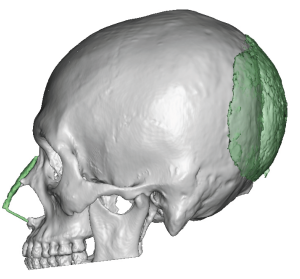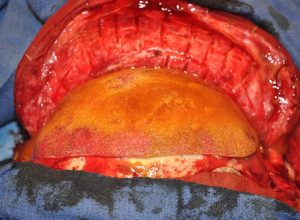Background: The most successful forms of significant aesthetic skull augmentation involves the placement of a custom designed implant directly on the skull bone under all layers of the scalp. The most commonly used custom skull implant is made of solid silicone for both ease of placement through a much smaller scalp incision and lower manufacturing cost.

But it has rarely been used as an aesthetic onlay material as it rigidity mandates a wide open scalp exposure and it can not be manufactured with feather edges. But if one can accept a full open coronal scalp incision (or already has the scar from a pre-existing one) and one is prepared to be able to smooth the implant edges circumferentially, then the HTR material offers a good implantation material.



The back of the head has always been one of the top desired locations for augmentation. In certain ethnicities this desire is common given the natural development of the skull to have less front to back projection. Numerous implant materials can be used which can be successful but the incisional needed to place them can influence that decision. Biologically HTR is a great material due to true complete fibrovascular ingrowth but its stiffness and lack of feather edges make its use aesthetically challenging. Its long term success is no surprise given these favorable tissue properties
Key Points:
1) Effective back of the head augmentation can be done with 20mm of implant projection…if the scalp can accommodate it .
2) While few patients ever want a full coronal scalp incision for an aesthetic skull augmentation it does allow for the placement of a rigid skull implant material like HTR.
3) A ten year 3D CT scan followup shows no evidence of any adverse reaction of the skull bone to the implant.
Dr. Barry Eppley
World-Renowned Plastic Surgeon




